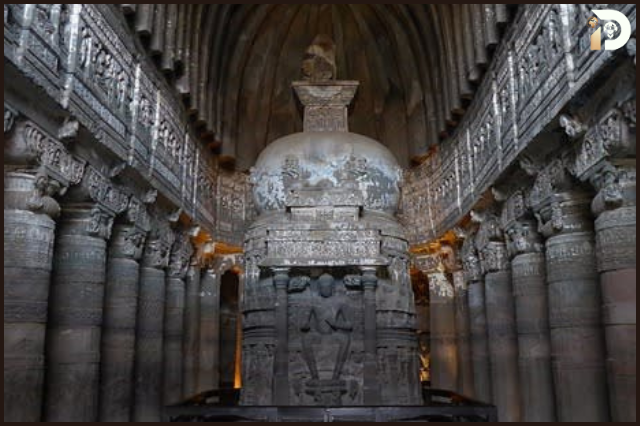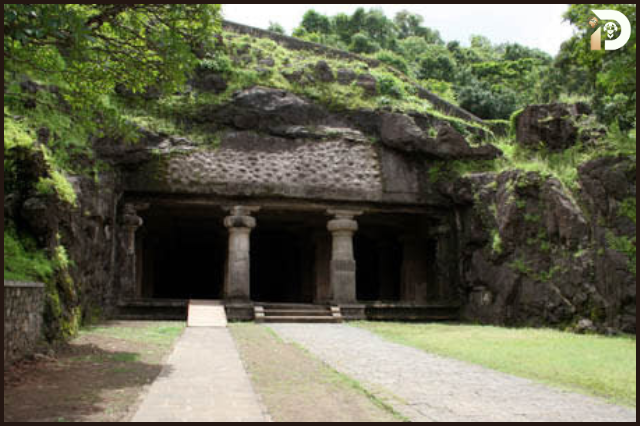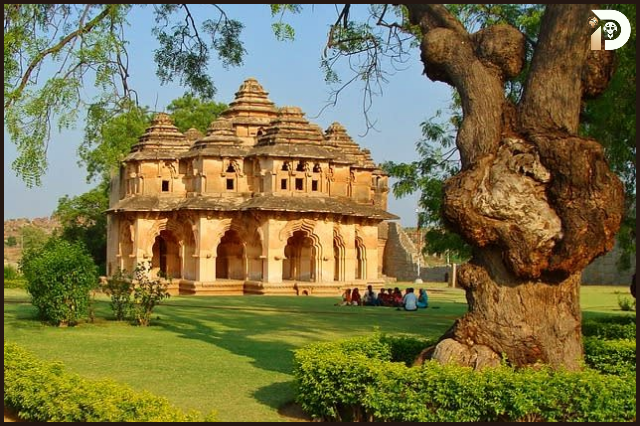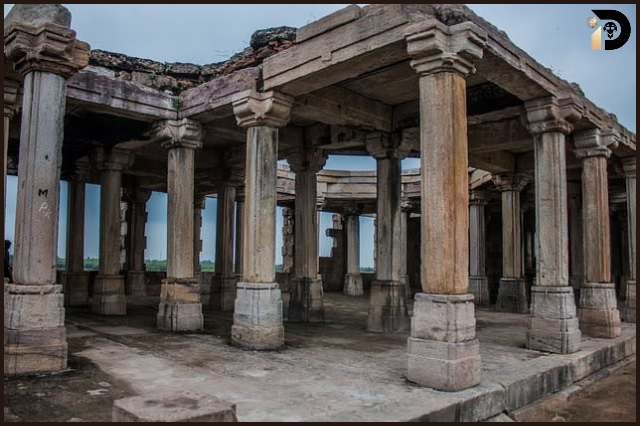We don’t think about our ancient origins, which date back hundreds of years, very often. But even if we do, the sheer depth and variety of our past will undoubtedly awe us. Our ancestors constructed cities and temples that are still standing today using simple tools and calculation techniques at a time when modern building materials and technology were inconceivable.
Even in this contemporary day of science and technology, these ancient monuments, which once served as the hub of trade, education, religion, or culture, continue to astound us with their engineering prowess, sculpting, and designs. In this I-day special, we present some of the oldest architectural wonders that we can proudly point to and claim as our own.
• Sanchi Stupa (Madhya Pradesh)

The oldest stone building in India is within an hour’s drive from the busy metropolis of Bhopal. The Sanchi Stupa, with its superb carvings of the well-known Jataka tales on the stone pillars, is one of the most significant Buddhist structures in the world and has been acknowledge by UNESCO as World Heritage Site. Numerous more historic Buddhist structures, such as stupas, temples, monasteries, and pillars, can be found nearby. All of those are from the third century BC to the twelfth century AD. In honor of Lord Buddha, the creator of Buddhism, Mauryan monarch Ashoka ordered them.
• Dhamek Stupa (Uttar Pradesh)

Located in Sarnath, Varanasi, this enormous pagoda is where Lord Gautam Buddha delivered his first sermon after attaining enlightenment. It was originally constructed by monarch Ashoka at the same time as he built the Sanchi Stupa, and it underwent renovation in 500 AD. It is not just a sacred site for Buddhists, but it also has tremendous significance for historians of ancient India who want to study Ashoka. It is built partly of stone and partially of brick.
• Maha Bodhi Temple (Bihar)

It is another Buddhist building on the UNESCO World Heritage Site list and is located in Bodhgaya, Bihar. The hub of Buddhism, it was also constructed by Emperor Ashoka in the third century BC. Lord Buddha is supposed to have obtained enlightenment here after three days and nights of meditation under a peepul tree (today known as the Bodhi tree). Then he delivered a sermon on Buddhist principles in the Bihar village of Bodh. The area is littered with numerous Buddhist temples and monasteries, the most well-known of which is the Mahabodhi Vihar monastery.
• Ajanta Ellora Caves (Maharashtra)

British officers engaged in a tiger hunt in 1819 made an unintentional discovery of the hidden gems. The Ajanta caves in Maharashtra, located around 100 miles from Aurangabad, are well-known for their wall paintings created using natural colours and simple instruments. The composition’s overall harmony and sensual forms refer to a high period in Indian Buddhist art. In 1983, UNESCO designated the 29 Buddhist cave temples in Ajanta, which date back to the second century BC. On the other side, the Ellora in Aurangabad is a prime example of Indian rock-cut architecture. There are 34 caverns at Ellora, containing Buddhist, Hindu, and Jain temples that were constructed 600 years after the Ajanta.
• Rani Ki Vav (Gujarat)

Rani Udaymati constructed this little-known technical feat in the 11th century AD in Patan, Gujarat. Rani ki Vav, a stepwell that descends up to seven levels and is carved with more than 500 sculptures of nymphs, people, animals, and gods, was built to honor the holy river Saraswati on whose banks it is located. However, the ten manifestations of Lord Vishnu are the main topic. In essence, it is designed to resemble an upside-down temple where the sacredness of water is worshipped.
• Elephanta Caves (Maharashtra)

Even though there are signs of occupation dating back to the second century B.C., it is thought that the caverns were actually carved out of the rock between the mid-fifth and late-sixth centuries. They comprise of rock art related to the worship of the Hindu god Shiva and are situated on an island off the coast of Mumbai. But several of the buildings are thought to have been destroyed by the Portuguese.
• Mahabalipuram Temple (Tamil Nadu)

Narasimhavarman, a Pallava ruler, constructed the historic town in southern India, also called Mamallapuram, in the seventh century AD. Mandapas, which are cave shrines, rathas, which are temples shaped like chariots, and enormous open-air reliefs like the well-known “Descent of the Ganges” are among the ancient rock carvings that dot the area.
• Nalanda (Bihar)

Between the fifth through the twelfth centuries AD, the historic seat of instruction remained open for business for 800 years. It was a residential institution that, according to estimates, housed 2000 faculty and close to 10,000 students. Scholars traveled there from all over the world to share information and learn, but invading armies destroyed it in the 12th century AD. It has just recently—since 2010—become functioning once more.
• Hampi (Karnataka)

Hampi was once one of the richest cities in the world. It is a temple town in the south Indian state of Karnataka and is recognized as a UNESCO World Heritage Site. According to the ceramic potteries that were discovered there, its history dates to the second and third centuries. Before it reached its zenith between 1509 and 1529, when international trade flourished, four dynasties dominated the area for 200 years. After that, the Moghul conquerors destroyed it.
• Champaner Pavagadh (Gujarat)

Champaner-Pavagadh, which lies in Gujarat’s Panchmahal district and is a UNESCO World Heritage Site, was once a bustling city. It was established by a Rajput monarch in the ninth century and served as an important junction for Gujarati trade routes. Therefore, numerous kings sought to conquer it, but Mahmud Begda was the first to do so in 1484. He changed it into a completely new capital. However, its fame was short-lived since Humayun, the Mughal emperor, quickly took control of it. He established Ahmedabad as the administrative center for Gujarat. As a result, the city began to deteriorate over time.
Liked It ! Share It With Your Friends 😃
